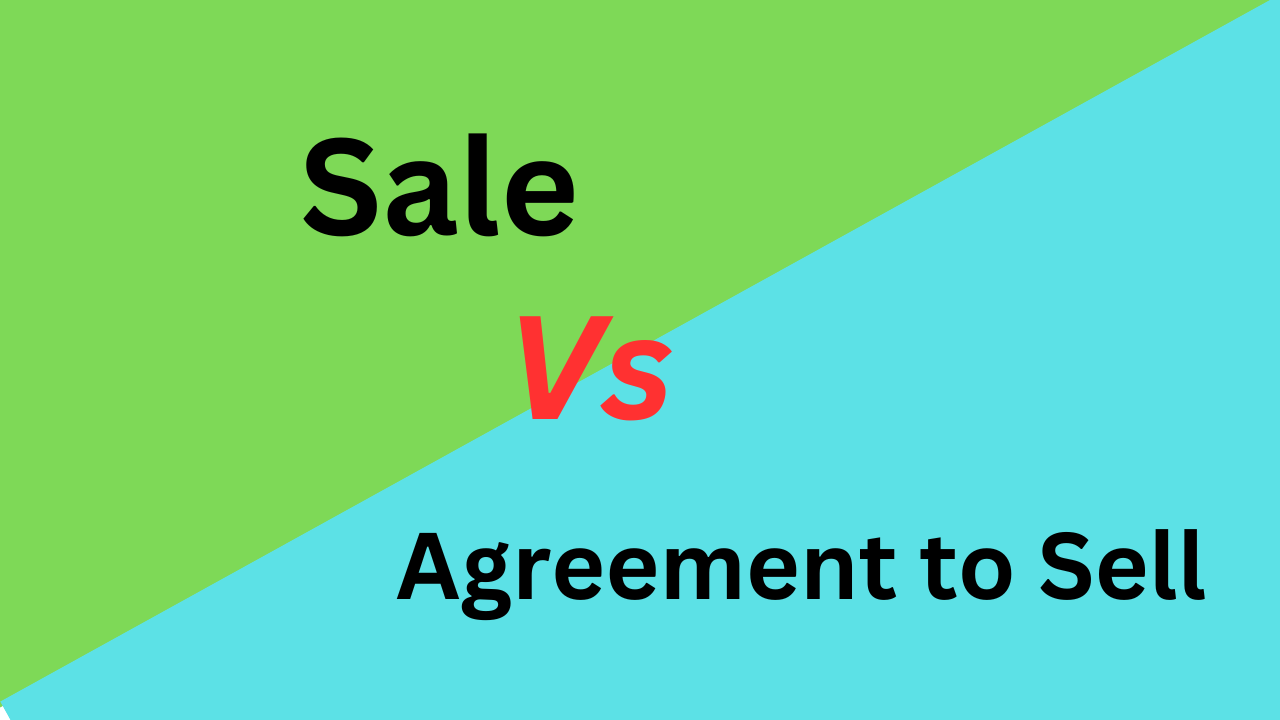
What is the main difference between sale and agreement to sell? The former refers to the transfer of ownership of goods immediately, while the latter is only a promise to transfer ownership at a future date or upon certain conditions.
Both sale and agreement to sell are part of a contract. But from a legal perspective, these terms have some slight differences. These differences have brought confusion among many people while carrying out some transactions.
This article provide detailed differences between agreement to sell and sale with examples . Take the time to read through and be able to list an example of agreement to sell or sale. You will also get to know when an agreement to sell becomes a sale.

| Basic Terms | Sale | Agreement to Sell |
| Meaning | A sale is a transaction in which ownership of goods is immediately transferred from the seller to the buyer. | An agreement to sell is a contract in which the seller legally says “yes” to transfer the ownership of goods to the buyer at a specific date or upon a specific event. |
| Rights and Obligations | Seller’s obligation is to deliver the goods and transfer ownership. | The seller must deliver goods upon the agreed date and transfer ownership upon delivery. |
| Transfer of Ownership | Ownership of goods is transferred from the seller to the buyer at a specific moment. | Ownership of goods is not transferred until delivery or fulfillment of specific conditions. |
| Legal Implication | The seller bears the risk of goods lost or damaged before delivery. Buyer bears the risk of goods lost or damaged after delivery. | Risk of loss or damage of goods remain with the seller until transfer of ownership. |
| Risk Involved. | Risk of damage of goods is transferred to the buyer. | All the risks are borne to the seller until transfer of ownership. |
| Distribution | Seller is obligated to deliver the goods to the buyer. | Seller is only obligated to transfer ownership of goods after meeting certain conditions. |
| Legal Action | The buyer has a right to sue the seller in case of a breach of contract. | The buyer cannot compel the seller to provide the items by bringing specific performance lawsuits. |
| Subsequent Responsibility | Loss to the property is the buyer’s responsibility. | Subsequent loss is borne to the seller |
| Tax | It is charged at the time of sale though it depends on the nature and cost of property. | No tax |
| Relation | Occurs when an agreement to sell becomes a sale | It is the basis of sale deed. |
A sale is a transactional exchange where a seller offers goods, services, or products to a buyer in return for a specified amount of money or another agreed-upon form of compensation. It represents the culmination of a marketing and negotiation process.
The seller aims to convince the buyer of the value and benefits of their offering. Sales can occur in various settings, including brick-and-mortar stores, online platforms, and even through interpersonal interactions.
Effective sales strategies encompass a range of activities, such as market research, targeting the right audience, conveying product features and benefits, addressing customer concerns, and building relationships.
The art of successful sales also involves understanding customer psychology, tailoring pitches to individual needs, and providing exceptional customer experiences to foster loyalty and repeat business.
An “Agreement to Sell” refers to a legally binding contract between a seller and a potential buyer in which both parties outline the terms and conditions of a future sale of a property or goods. This agreement outlines the specifics terms of transaction.
An Agreement to Sell establishes the intent to complete a sale at a later date, subject to certain conditions being met. These conditions might include obtaining necessary permits, fulfilling specific obligations, or completing financial arrangements.
This preliminary contract is often used to secure the transaction and provide legal protection to both parties while the final preparations are made. It’s important to note that the Agreement to sell lays the foundation for the eventual sale and carries legal implications.
The distinction between a sale and an agreement to sell lies in the transfer of ownership and risk. A sale is the immediate transfer of both ownership and risk from the seller to the buyer. Once a sale is completed, the buyer assumes full responsibility for the goods.
On the other hand, an agreement to sell is a promise to transfer ownership and risk at a future date or upon certain conditions being met. Until that moment arrives, the seller retains ownership and bears the risk.
The key difference is that in a sale, the ownership and risk change hands instantly, whereas in an agreement to sell, these aspects remain with the seller until the agreed-upon conditions are satisfied.
People Who Read This Also Read: